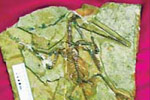Energy
China's rare earth producers push for clear national strategy
Updated: 2011-01-21 17:15
(Xinhua)
HOHHOT -- Local political advisors and industry insiders in China's leading rare earth producing regions are pushing the central government to issue a clear national strategy for the industry's development.
Political advisors in northern Inner Mongolia autonomous region are raising the issue at local annual political consultative meetings.
| ||||
The Inner Mongolia Autonomous Regional Committee of the China Association for Promoting Democracy submitted a proposal on behalf of its members for discussion at the regional political consultative meeting this week, calling for a detailed national rare earth industry strategy.
Du Fenglian, one of the drafters of the proposal and a professor at Inner Mongolia University, proposed the central government set up a special fund to tackle technology bottlenecks in rare earths processing and application so that the limited mineral resources for making high-end products like the i-Pad and new energy cars can be applied by domestic producers rather than feeding bulk buyers abroad.
Other organizations such as the Inner Mongolia Autonomous Regional Committee of the Jiu San (September 3rd) Society, one of China's eight democratic parties, also submitted similar proposals for discussions at the local political consultative meeting.
Yang Wanxi, director of a rare earth expert panel of the Baotou Municipal Committee of Sciences, suggested the central government help introduce qualified investment firms to cooperate with the Inner Mongolia Baotou Steel Rare-earth Hi-tech Co, which has the franchise for rare earth exploration in Baotou city.
"The mining firm needs capital to upgrade its production technology to make better use of the mineral resources," he said.
The Ministry of Land and Resources announced Tuesday that more than 280 illegal mines had been shut to regulate the exploration of valuable minerals, such as rare earths, in a national clean-up campaign over the past two years.
The number of exploration licenses for minerals such as rare earths, tungsten, tin, and antimony fell to 116 from 400 in 11 provinces and regions, according to spot checks by the ministry in 2010.
The ministry, in its first decree of this year, designated 11 rare earth mines in Ganzhou city, Jiangxi, as "national planning mines."
"We are glad to have the first national titles in the country for rare earth mines, but we have not yet got any clue about the central government's exploration plan for these mines," said Li Guoqing, director of the mining management bureau in Ganzhou.
The wholely state-owned Ganzhou Mining Co Ltd has the city franchise to mine 33,600 tons of ionic type rare earth reserves, the largest such reserve in the world.
Li said rare earth mining in Ganzhou was rampant in the 1990s. The valuable resource was sold at low prices and most of the mining firms incurred losses. Their debts amounted to 300 million yuan by 1999.
In 2003, the city government started to issue production quota to mining companies and closed 3,000 illegal mines.
"We have learnt from the past lessons that monopolized mining and planning in rare earth mining are conducive to sustainable use of the resource and environmental protection," he said.
Industry insiders are also pushing for two national rare earth trading centers in Inner Mongolia and Jiangxi to provide a market-driven pricing mechanism.
As the world's largest rare earth producer, exporter and consumer, China provides 95 percent of the global rare earth demand, though its reserves account for just 25 percent to 30 percent of the world's rare-earth resources.
The Ministry of Commerce Tuesday said China exported 35,000 tonnes of rare earth from January to November last year, up 14.5 percent from a year earlier. Exports to Japan, the European Union and the United States accounted for 86 percent of the total.
Specials

President Hu visits the US
President Hu Jintao is on a state visit to the US from Jan 18 to 21.

Ancient life
The discovery of the fossile of a female pterosaur nicknamed as Mrs T and her un-laid egg are shedding new light on ancient mysteries.

Economic Figures
China's GDP growth jumped 10.3 percent year-on-year in 2010, boosted by a faster-than-expected 9.8 percent expansion in the fourth quarter.



